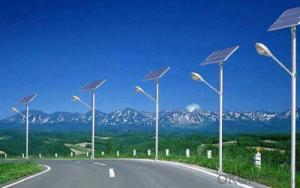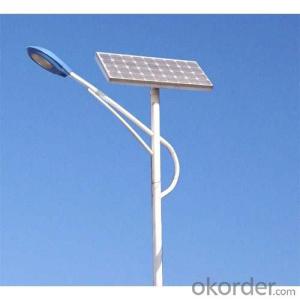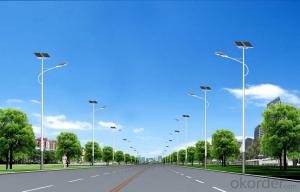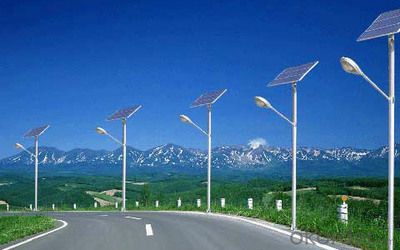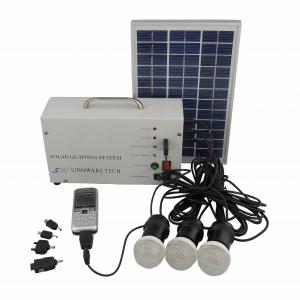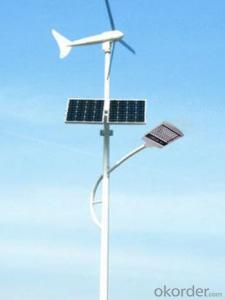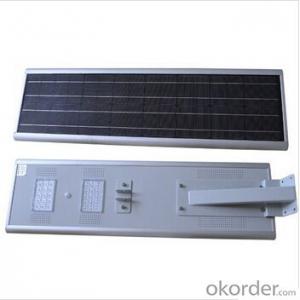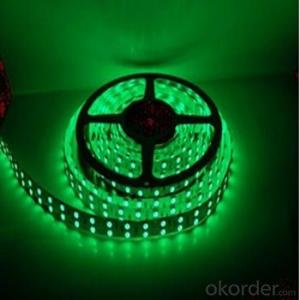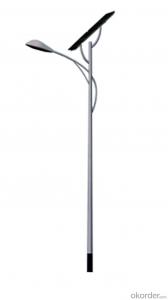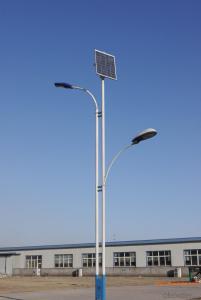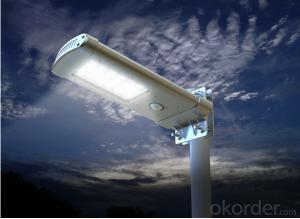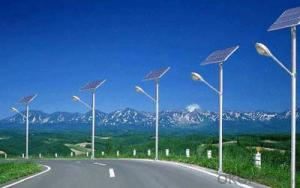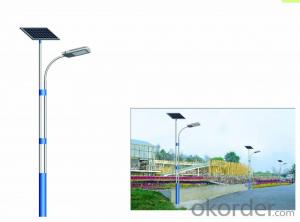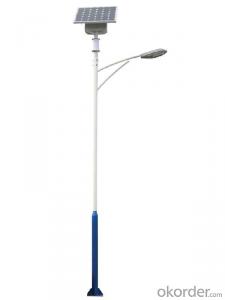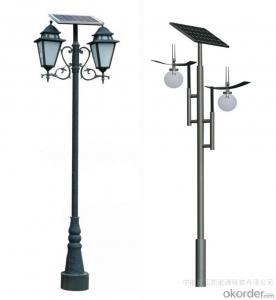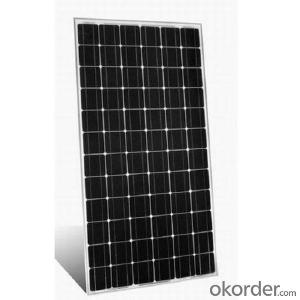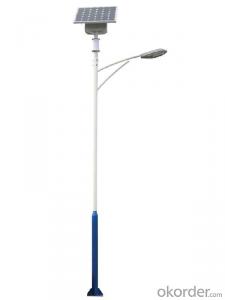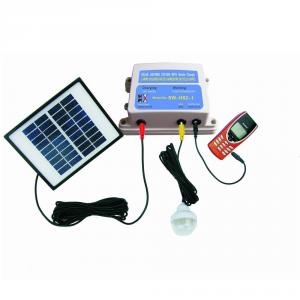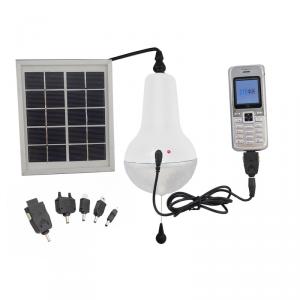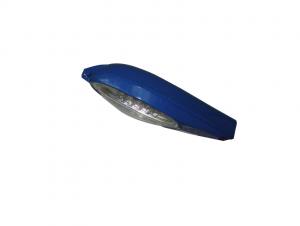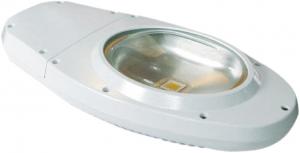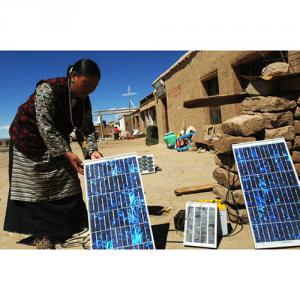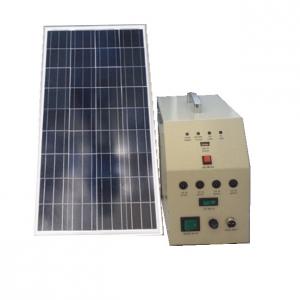Solar Light on Pole - Off Grid New Energy Solar Product Good Product
- Loading Port:
- Shanghai
- Payment Terms:
- TT OR LC
- Min Order Qty:
- 1 watt
- Supply Capability:
- 5000 watt/month
OKorder Service Pledge
OKorder Financial Service
You Might Also Like
1, Product desciption
Inverter circuits designed to produce a variable output voltage range are often used within motor speed controllers.
The DC power for the inverter section can be derived from a normal AC wall outlet or some other source. Control and feedback circuitry is used to adjust the final output of the inverter section which will ultimately determine the speed of the motor operating under its mechanical load.
Motor speed control needs are numerous and include things like: industrial motor driven equipment, electric vehicles, rail transport systems, and power tools. (See related: variable-frequency drive ) Switching states are developed for positive, negative and zero voltages as per the patterns given in the switching Table.
The generated gate pulses are given to each switch in accordance with the developed pattern and thus the output is obtained.
Solar power is energy from the sun. "Solar" is the Latin word for "sun" and
And Powerful source of energy. Without it, there will be no life.
Solar energy is considered as a serious source of energy for many years
of the vast amounts of energy that is made freely available, if harnessed by modern technology.
A magnifying glass can be used to heat up a small amount of water.
The short piece of copper tube is sealed at one end and filled with water.
And magnifying glass is then used to warm up the pipe.
Using more than one magnifying glass will increase the temperature more rapidly.
2, Features of the product
Inverters convert low frequency main AC power to higher frequency for use in induction heating.
To do this, AC power is first rectified to provide DC power. The inverter then changes the DC power to high frequency AC power. Due to the reduction in the number of DC Sources employed, the structure becomes more reliable and the output voltage has higher resolution due to an increase in the number of steps so that the reference sinusoidal voltage can be better achieved.
This configuration has recently become very popular in AC power supply and adjustable speed drive applications. This new inverter can avoid extra clamping diodes or voltage balancing capacitors. There are three kinds of level shifted modulation techniques, namely: 1,High and stable conversion efficienly based on over 4 years professional experience
2 ,High reliability with guaranteed +/-10% output power tolerance
3,Proven materials,tempered front glass,and a sturdy anodized aluminum frame allow modules to operate reliably in multiple mountily configurations
4,Combination of high efficicncy and attractive appearance
The first thing to figure out is the length of road in need of street lights.
This can be a small entrance road only a couple hundred of feet long to miles of streets through an area. Does the area currently have any type of lighting available.
What is the reason for needing street lights in this area
Is the electrical grid already nearby or would you need to call in the power company to bring in electrical lines.
If the electric needs to be brought to the area, how much is this going to cost? Depending on how far the grid electric is from the location of the needed lighting, this can be quite expensive.
How much lighting is needed on the street? Do the lights need to be dark sky compliant.
Do the street lights need to run from dusk to dawn or for only a specified number of hours at night.
Are the street lights able to dim in the middle of the night and still provide enough lighting.
These questions need to be answered before you can decide on how many lights you will need to complete the project.
3, Detailed Specification
Data Sheet of High Quality Solar Controller Tracer-1210RN
ModelTracer-1210RN
Rated system voltage12/24V auto work
Rated battery current10A
Rated load current10A
Max.battery voltage32V
Max.PV open circuit voltage100VDC
Max.PV input power12V 130W;24V 260W
Self-consumption<10ma(24v)< span="">
Charge Circuit Voltage<=0.26v< span="">
Discharge Circuit Voltage Drop<=0.15v< span="">
CommunicationTTL232/8 pin RJ45
Temp/compensation-30mV/℃/12V(25℃)
Working temperature-35℃~+55℃
Storage temperature range-35℃~+55℃
4, Product Image
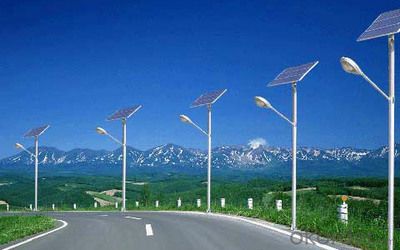
- Q: Are solar lights resistant to extreme weather conditions?
- Yes, solar lights are designed to be resistant to extreme weather conditions. They are built with durable materials that can withstand harsh elements such as rain, snow, heat, and cold. Additionally, many solar lights are equipped with features like waterproofing and temperature protection to ensure their functionality in various weather conditions.
- Q: Can solar lights be dimmed?
- Yes, solar lights can be dimmed by adjusting the settings or using a dimmer switch, if they are equipped with such features.
- Q: Are solar lights suitable for commercial use?
- Yes, solar lights are suitable for commercial use. They are cost-effective, energy-efficient, and environmentally friendly, making them a viable option for businesses to illuminate outdoor areas such as parking lots, pathways, and signage. Additionally, solar lights require minimal maintenance and can provide reliable lighting even in remote locations.
- Q: Are solar lights suitable for off-road and remote locations?
- Yes, solar lights are suitable for off-road and remote locations. They are a practical and cost-effective lighting solution for areas without reliable access to electricity. Solar lights operate independently of the grid by harnessing sunlight during the day to charge their batteries, allowing them to provide illumination at night. This makes them ideal for off-road and remote locations where traditional lighting infrastructure may be absent or difficult to install. Additionally, solar lights are generally durable, weather-resistant, and designed to withstand harsh environments, making them a reliable choice for such locations.
- Q: Can solar lights be used for parking lots and garages?
- Yes, solar lights can be used for parking lots and garages. They are a cost-effective and sustainable lighting solution that can provide ample illumination for these areas. Solar lights are easy to install, require minimal maintenance, and can operate independently from the electrical grid, making them ideal for outdoor spaces like parking lots and garages.
- Q: Can solar lights be used for garden ponds and fountains?
- Yes, solar lights can be used for garden ponds and fountains. They are a great option as they do not require electricity connection and can be easily installed. Solar lights provide efficient and sustainable lighting for these outdoor features, enhancing their visual appeal while being environmentally friendly.
- Q: Do solar lights have adjustable timer settings for automatic on/off?
- Absolutely, a multitude of solar lights offer adjustable timer settings to facilitate automatic on/off functionality. These settings enable you to personalize the activation and deactivation of the lights according to your individual requirements and preferences. Certain solar lights may present preset timer choices, such as 4, 6, or 8 hours, whereas others provide increased flexibility with customizable time intervals. This characteristic proves exceptionally beneficial in terms of energy conservation and guaranteeing that the lights are solely illuminated when necessary, thereby optimizing their efficiency. To modify the timer settings, kindly refer to the instructions provided by the manufacturer or consult the product manual.
- Q: How do I choose the right solar panel size for my lights?
- When choosing the right solar panel size for your lights, you should consider the power consumption of your lights and the amount of sunlight available in your location. Start by determining the power requirements of your lights in watts, then calculate the daily energy consumption. Next, consider the average daily sunlight hours in your area and the efficiency of the solar panels you are considering. Finally, divide your daily energy consumption by the product of sunlight hours and panel efficiency to determine the necessary solar panel size.
- Q: Are solar lights customizable in terms of design and color?
- Solar lights can be customized in terms of design and color, offering a plethora of choices in the market. From sleek and modern to traditional and decorative, there is a wide range of options to cater to different tastes and preferences. Moreover, many solar lights come with interchangeable panels or covers, providing the flexibility to change colors or designs as desired. This adaptability and personalization make solar lights an excellent selection to add a personalized touch to your outdoor lighting arrangement.
- Q: Can solar lights be used for illuminating outdoor gazebos and pergolas?
- Certainly, solar lights are a viable option for brightening up outdoor gazebos and pergolas. These structures can benefit greatly from the use of solar lights due to their convenient installation process that eliminates the need for electrical wiring. Solar lights function by utilizing solar panels that absorb sunlight during the day and convert it into energy, which is then stored in rechargeable batteries. As night falls, these batteries power the lights, creating a gentle and soothing illumination in the area. You have the freedom to choose from a variety of solar light designs and styles that suit your gazebo or pergola. Additionally, solar lights are eco-friendly since they rely on renewable energy and produce zero greenhouse gas emissions. In summary, solar lights offer a cost-effective, low-maintenance, and energy-efficient solution for illuminating outdoor gazebos and pergolas.
Send your message to us
Solar Light on Pole - Off Grid New Energy Solar Product Good Product
- Loading Port:
- Shanghai
- Payment Terms:
- TT OR LC
- Min Order Qty:
- 1 watt
- Supply Capability:
- 5000 watt/month
OKorder Service Pledge
OKorder Financial Service
Similar products
Hot products
Hot Searches
Related keywords
